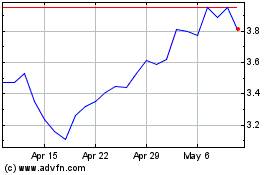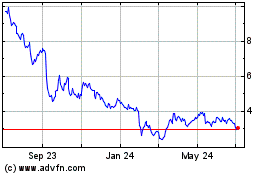Saudi Arabia and UAE together imported more than Western Europe
combined; Russia exported $10 billion worth of defence equipment in
2014
IHS Inc. (NYSE:IHS), the leading global source of critical
information and insight, today released its annual Global Defence
Trade Report, which examines trends in the global defence market
across 65 countries and is based upon 40,000 defence programme
deliveries from IHS Aerospace, Defence & Security’s Markets
Forecast database.
In 2014, global defence trade increased for the sixth straight
year to $64.4 billion, up from $56.8 billion. “Defence trade rose
by a landmark 13.4 percent over the past year,” said Ben Moores,
senior defence analyst at IHS Aerospace, Defence & Security.
“This record figure has been driven by unparalleled demand from the
emerging economies for military aircraft and an escalation of
regional tensions in the Middle East and Asia Pacific.”
Highlights from the IHS Global Defence Trade Report:
- Saudi Arabia topped India to become the
largest defence market for US;
- The US supplied one-third of all
exports and was the main beneficiary of growth;
- Saudi Arabia and UAE imported more than
all of Western Europe;
- China is now the third largest importer
of defence equipment, up from fifth;
- South Korea is the rising star of Asia
Pacific exports;
- Despite a record 2014, Russian defence
exports are set to drop;
- Saudi Arabia, Indonesia, Sweden and
Nigeria are the UK’s top trading partners.
One out of every seven dollars spent on defence imports will
be spent by Saudi Arabia
In 2014, Saudi Arabia replaced India as the largest importer of
defence equipment worldwide and took the top spot as the number one
trading partner for the US.
“Growth in Saudi Arabia has been dramatic and, based on previous
orders, these numbers are not going to slow down,” Moores said.
Already the largest importer of weapons, Saudi Arabian imports
increased by 54 percent between 2013 and 2014 and, based on planned
deliveries, imports will increase by 52 percent to $9.8 billion in
2015. One out of every seven dollars spent on defence imports in
2015 will be spent by Saudi Arabia.
$110 billion in opportunities in Middle East
“When we look at the likely export addressable opportunities at
a global level for the defence industry, five of the 10 leading
countries are from the Middle East,” Moores said. “The Middle East
is the biggest regional market and there are $110 billion in
opportunities in coming decade.”
Saudi Arabia and UAE together imported $8.6 billion in defence
systems in 2014, more than the imports of Western Europe combined.
The biggest beneficiary of the strong Middle Eastern market remains
the US, with $8.4 billion worth of Middle Eastern exports in 2014,
compared to $6 billion in 2013.
The second tier of exporters to the Middle East is led by the
United Kingdom with $1.9 billion, the Russian Federation with $1.5
billion, France with $1.3 billion and Germany with $1 billion.
China and South Korea stand out in Asia Pacific
In 2014, China jumped from the world’s fifth to the third
largest defence importer.
“China continues to require military aerospace assistance from
Russia and its total defence procurement budget will continue to
rise very quickly,” said Paul Burton, Director of Defence Industry
& Budgets at IHS Aerospace, Defence & Security.
IHS forecasts that fast-emerging exporter South Korea will
become a regional leader in the coming decade. Some $35 billion in
new contracts will come online within the next decade and the South
Korean defence industry is forecast to win $6 billion in new
business within East Asia. South Korea looks set to be the rising
star of the Asia Pacific defence industry.
Russia had record year, but a perfect storm awaits
Russia exported $10 billion in 2014, an increase of 9 percent
from 2013. China was the largest recipient of equipment ($2.3
billion) followed by India ($1.7 billion), and Venezuela and
Vietnam (each $1 billion).
After years of sales growth, Russian industry exports now face
challenging times. A drop off in exports is forecast for 2015 as
major programs draw to a close, a trend that could be accelerated
by sanctions.
Furthermore, falls in the oil price are set to have a
devastating impact on some lead Russian clients who are vulnerable
to low oil prices, such as Venezuela and Iran. This problem is
compounded as Chinese industry becomes increasingly less dependent
on Russian technology.
The Data
Top Defence Importers Top
Defence Importers 2013
2014 1. India 1. Saudi Arabia 2.
Saudi Arabia 2. India 3. UAE
3. China 4. Taiwan
4. UAE 5. China 5. Taiwan 6. Indonesia
6. Australia 7. South Korea
7. South Korea 8. Egypt
8. Indonesia 9. Australia 9.
Turkey 10. Singapore 10. Pakistan
Top Defence Exporters
Top Defence Exporters 2013
2014 1. United States
1.United States 2. Russian Federation
2. Russian Federation 3. France 3.
France 4. UK 4. UK 5. Germany
5. Germany 6. Israel
6. Italy 7. China 7. Israel 8.
Italy 8. China 9. Sweden
9. Spain 10. Canada 10.
Canada
Top Company
Exporters Top Company Exporters 2013
2014 1. Boeing
1. Boeing 2. Raytheon 2.
Lockheed Martin 3. Lockheed Martin 3.
Raytheon 4. Airbus Group 4. Airbus
Group 5. UAC 5. UAC 6. BAE Systems
6. Russian Helicopters 7. Thales
7. United Tech Corp 8. United Tech Corp
8. BAE Systems 9. UralvagonZavod
9. Thales 10. Russian Helicopters
10. Finmeccanica
About the Global Defence Trade Report
The report was created using the IHS Aerospace, Defence &
Security Markets Forecast database, a publicly sourced global
forecasting tool that tracks current and future programs from the
bottom up, looking at deliveries and funds released to industry
rather than budgets. The study covers production, R&D, logistic
support and service revenues where there is an export.
The entire market is covered except for munitions and small
arms. Anything under 57mm caliber has not been included in this
study. The study only tracked programs with a primarily military
function, removing homeland security and Intelligence programs.
Constant US dollars are used as the study’s base. For additional
information visit: www.ihs.com/jmf
About IHS
(www.ihs.com)
IHS (NYSE:IHS) is the leading source of insight, analytics and
expertise in critical areas that shape today’s business landscape.
Businesses and governments in more than 150 countries around the
globe rely on the comprehensive content, expert independent
analysis and flexible delivery methods of IHS to make high-impact
decisions and develop strategies with speed and confidence. IHS has
been in business since 1959 and became a publicly traded company on
the New York Stock Exchange in 2005. Headquartered in Englewood,
Colorado, USA, IHS is committed to sustainable, profitable growth
and employs about 8,800 people in 32 countries around the
world.
IHS is a registered trademark of IHS Inc. All other company and
product names may be trademarks of their respective owners. © 2015
IHS Inc. All rights reserved.
Photos/Multimedia Gallery Available:
http://www.businesswire.com/multimedia/home/20150307005019/en/
News Media Contact:IHS Inc.Amanda Russo+44 208 276 4727 |
+44 781 460 3420Amanda.Russo@ihs.comorIHS Inc.Press Team+1 303 305
8021press@ihs.com@IHS_News
IHS (NYSE:IHS)
Historical Stock Chart
From Mar 2024 to Apr 2024

IHS (NYSE:IHS)
Historical Stock Chart
From Apr 2023 to Apr 2024
